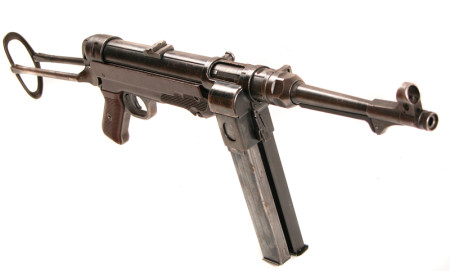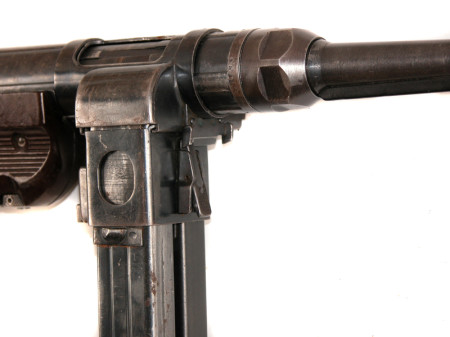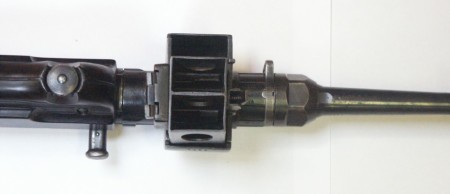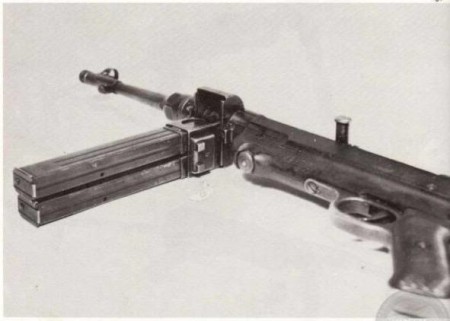From the first introduction of detachable magazines on firearms, people have been looking for ways to increase magazine capacity. Whether it is drum mags, longer box mags, jungle clips to connect multiple mags together, or other gimmicks, more ammo is always the goal. Well, the German army took a rather unusual approach to this issue in 1942, when it introduced an experimental double-magazine version of the MP40.

The gun was intended for special operations troops who were judged to have a particularly pressing need for more ammo on hand to deal with ambushes and high-intensity close range firefights. The design used a completely stock MP40 and replaced the magazine housing with a redesigned one which held two magazines side by side. The pair of magazine wells was a sliding unit that could move left and right under the receiver. Once one magazine was emptied, the shooter would just press a latch on the front of the housing and slide the unit laterally and inch or so, positioning the second loaded magazine in the path of the bolt. The bolt would still have to be pulled back manually before firing, but given the use of military-style magazine pouches this was still definitely faster than reloading a standard MP40.
Official doctrine called for troops to slide the new mag into place when the first was empty, and then replace the empty mag with a full one, so a spare loaded mag was always available in reserve. This allowed the gun to be loaded and ready in case one was surprised while reloading, but only in extreme cases were both mags to be emptied in the gun.

On the plus side, this system could be made with minimal changes to MP40 production, and it used any standard MP40 magazines. However, it had a number of downsides (as do most all really high capacity adaptations). First, as always, weight was an issue. With two loaded magazines, the gun weighed in at just over 12 pounds, and much of that was up front making the gun awkward to handle. The sliding mechanism was also vulnerable to jamming from dirt or grime in a way that would never happen to a normal MP40.

Ultimately (and fairly quickly), the experiment with this variation of the MP40 was cancelled. It simply didn’t offer enough advantages over normal guns in the army’s view. Very few survived the war, although it seems likely that counterfeits have been made, as the guns command extremely inflated prices compared to normal MP40s, and the modification is comparatively easy to do (I have heard that a few dual-mag housings were brought over to the US from Czechoslovakia or Yugoslavia after the war, which would make it very easy to make one of these). The original ones were made by Erma and Steyr (manufacturing codes ayf and bnz respectively) in 1943.

These guns are generally referred to as “MP40/II”, but this nomenclature is incorrect. In official Wehrmacht equipment lists, they are called MP40/I. There were changes made to the standard MP40 early in its production (new bolt handle design and ribbed mag housing), but these changes were never given a new designation. So the first major variant of the design was this dual-mag system, hence it was called the MP40/I.

Be the first to comment